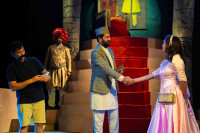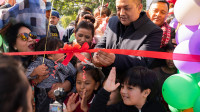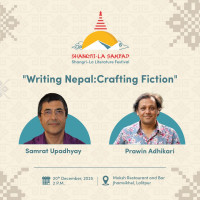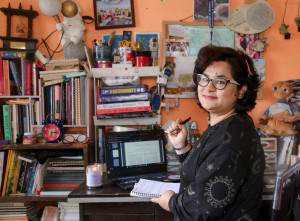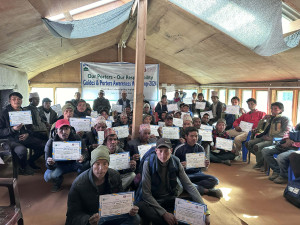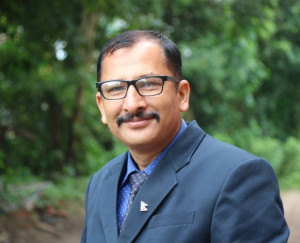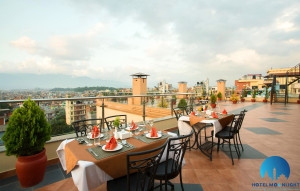Culture & Lifestyle
Drag, drama and pride
The modern drag scene in Nepal is relatively new. The first-ever official drag show was held five years ago at Pink Tiffany, the country’s first LGBTI-friendly restaurant.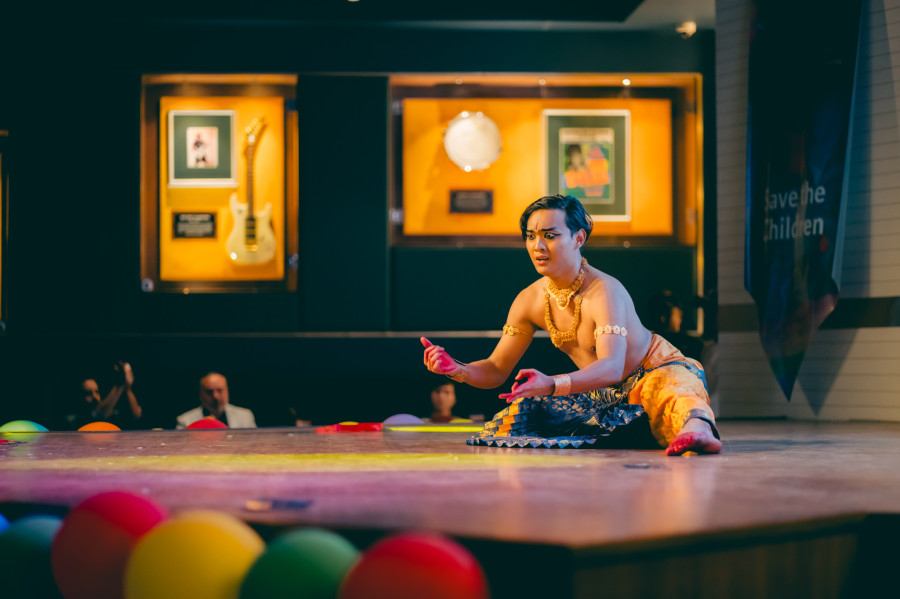
Aarati Ray
On June 21, 2024, as the sun lingered in the sky on the longest day of the year, the Hard Rock Cafe in Durbarmarg shined with ‘loud and proud’ performances for the second season of ‘Drag Show for Visibility’.
Ajay Gurung, the event’s emcee, set a spirited tone by saying, “Happy Pride. Be loud, be proud, be you because nothing feels like home more than when you express yourself loudly and proudly.”
And nothing could be more true. Loud and proud—that was the ultimate energy at Hard Rock Cafe.
The event featured energetic pop performances to soothing classical pieces, dramatic lip-sync battles, and an enthusiastic audience that filled the bar and lounge areas, with many dancing on chairs.
The atmosphere was wild, vibrant, and joyful, with the spirit of pride palpable throughout the night. Even the staff and security at Hard Rock Cafe couldn’t resist joining in, jamming to the beat as they worked.
It was a night of drag, drama, pride, and, most importantly, the celebration of the undeniable sense of community.
A drag show is a performance where individuals, often known as drag queens or kings, dress in exaggerated costumes and makeup to entertain. These performances can include singing, dancing, lip-syncing, and comedy. Drag is an art form that challenges traditional gender roles and celebrates self-expression, regardless of the performer’s gender identity.
The modern drag scene in Nepal is relatively new. The first-ever official drag show was held in June 2019 at Pink Tiffany, the country's first LGBTI-friendly restaurant.
American artists headlined this show, but Meghna Lama, the restaurant’s then-owner, hoped it would allow Nepali drag enthusiasts to take the stage.
But there were small and discreet events before 2019. According to Executive Director of Blue Diamond Society (BDS) Manisha Dhakal, BDS discreetly organised a drag show at Vaishali Hotel in Thamel in 2001.
“We didn’t have a safe space at the time, so the drag show was organised discreetly. At the time, we rehearsed and prepared at the house of Umisha Pandey (one of the founders and current vice president) because of the lack of safe space.”
Fast-forward to 2024, and there has been a notable rise in the number of drag shows where Nepali artists are now the main attraction.
The inaugural season of ‘Drag Show for Visibility’ took place on June 16, 2023. Organised by BDS and supported by Save the Children and Plan International Nepal, in collaboration with Hard Rock Cafe Kathmandu and Kaleidoscope Production, the second season featured a diverse lineup of local and national drag artists.
Each performer portrayed inclusivity, empowerment, and authenticity through their performances. They entertained and educated the audience by challenging societal norms and perceptions about gender and sexual identity.
The judging panel featured Sophiya Bhujel, Miss Universe Nepal 2022; Divinish (Anish Tamang), Nepal’s pioneering body painter; and Aniee Lama, a transgender woman and winner of Miss Pink 2016.
Following auditions on June 9, which attracted over 20 participants, six finalists—Angelina Amber, Momolicca, Kohinoor, Rickysis, Shine, and Queen of Lady—were selected for the grand finale.
CEO of Kaleidoscope Production, Pranaya Ratna Shakya, emphasised the importance of inclusivity in drag, stating, “Our goal was to ensure a fair and excellent show, and I believe everyone witnessed that. We’ve received tremendous support from the community. Drag is more than just about gender identity—it’s a celebration of performing arts.”

He added, “This time, we didn’t categorise performers as drag queens or kings; instead, we embraced all drag performers. It’s a platform where individuals can express themselves freely and authentically.”
Bhujel, who attended the event for the second time, having been a special guest last year and a judge this year, shared, “I loved the event last year, and I loved it this year as well because I think this shows my support as an ally to the LGBTQIA+ community.”
She also highlighted the impact of increased drag events in Nepal this year, which resulted in fewer contestants than last year.
Bhujel opined, “Events like these are crucial for the LGBTQIA+ community because they face many hurdles that straight people may not fully understand. It’s not just about the drag show; any event showing allyship matters. Posting on social media isn’t sufficient—we must be physically present to demonstrate our support and solidarity.”
Shine, the first runner-up reiterated the importance of organising more events like these for visibility, where everyone, regardless of gender or sexuality, can participate. She praised the absence of gender criteria this year as an important step towards inclusivity, emphasising that for her, everyone is simply human.
After the victory, Momolicca shared, “Drag is my proud career, and I'm committed to promoting this art form and encouraging more people to participate. I look forward to continuing my journey in performing this art.”
Momolicca, also known as Aayam Poudel, co-founded Queermandu, Nepal’s first gay-owned tour company. The recipient of the fifty thousand prize money, addressing whether drag is exclusively for the urban LGBTQIA+ community, commented, “I don’t think so. Even in my performance today, there was a rural flavour.”
“Nepal is rich in cultures and diversity, so Nepali drag should reflect these various flavours, including rural elements. It’s essential to incorporate this diversity in future drag shows. There’s no drag without embracing Nepalipan,” Momolicca added.
The evening was a mix of drag, drama, and pride, highlighting the importance of visibility and acceptance for the LGBTQIA+ community in Nepal. As drag culture continues to grow, it brings with it a powerful message of inclusivity and self-expression, crucial not only for Pride Month but for creating a more inclusive society year-round.




 18.12°C Kathmandu
18.12°C Kathmandu


.jpg&w=200&height=120)
